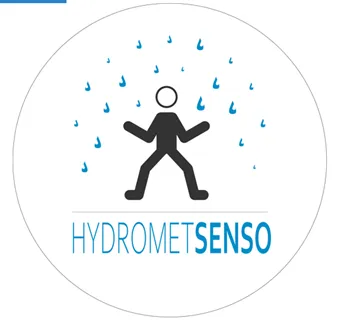HydroMetSenso
Use of hydrometeorological sensors to improve the data situation in small catchment areas

In small catchments (catchment areas) on the mesoscale (area sizes from a few km² to a maximum of 100 km²), there are usually no spatially high-resolution measurement series of hydrometeorological variables available. The common measurement networks of the national meteorological and hydrometeorological services (MHD) record the components of weather events required for hydrological modelling only on a large scale with a coarse spatial resolution. In Bavaria, the mean spatial density of the automatic precipitation stations (Deutscher Wetterdienst and Landesamt für Umwelt) is 14.6 km².
In order to enable reliable modelling in small catchments, measurements or data recordings must be made with measuring equipment constructed or modified for these purposes. In order to record the required quantities, a suitable measuring device is being developed with already available, low-cost sensors and single-board computers (such as Raspberry PI) for controlling, storing and remotely transmitting the measurement data.
The aim of the planned project is to develop a system:
- for the continuous recording and transmission (including remote data transmission) of hydrometeorological variables (precipitation, air temperature, relative humidity, sunshine duration, wind speed, etc.) in small, unobserved catchment areas;
- for automatic coupling with commonly used hydrological models, incorporating the recorded values into 2D hydraulic modelling and into hydrological modelling with physically based rainfall-runoff models (N-A-M) in small watersheds (EZG) at the meso-scale;
- for efficient densification of existing observation networks;
- for quality control (internal and external consistency) of the measured time series;
- for data assimilation for the inverse modelling of the process-based hydrological model;
- for the creation of qualitatively better data bases through data compression with the use of innovative techniques (single-board computers, microprocessors, low-cost sensor technology) in small and medium-sized catchments;
- for direct linkage with teaching at TUM; these low-cost measurement systems are used directly for teaching purposes at TUM.
The innovation potential of the HYDROMETSENSO project consists not only in the development of low-cost networks, but also in the automatic coupling with frequently used hydrological software (e.g. WaSiM, LARSIM, MIKE) in order to enable data assimilation and real-time predictions in a more realistic way. The automatic coupling is to be realised in a pilot area in order to validate the developed instruments with the help of already available reference data and to test the coupling of the process chain measurement-model-application-prediction with them.
HYDROMETSENSO is a joint project between the Technische Hochschule München TUM and the Ingenieurbüro für Umweltmanagement und Wasserwesen UWM Dr. techn. habil. Tibor Molnar.
Client: Federal Minister of Education and Research
Project start: 01.04.2021
Project end: 31.04.2023
Project management: Dr. techn. habil. Tibor Molnar; Prof. Dr. Gabriele Chiogna
Project execution: Dr.-Ing. Karl Broich